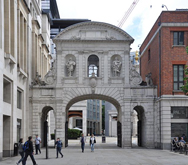Temple Bar
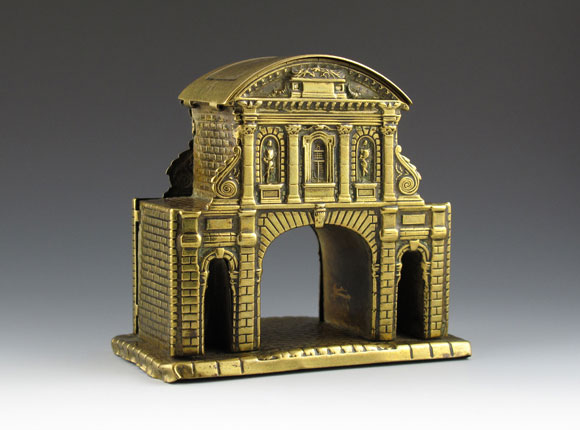
Needle Case
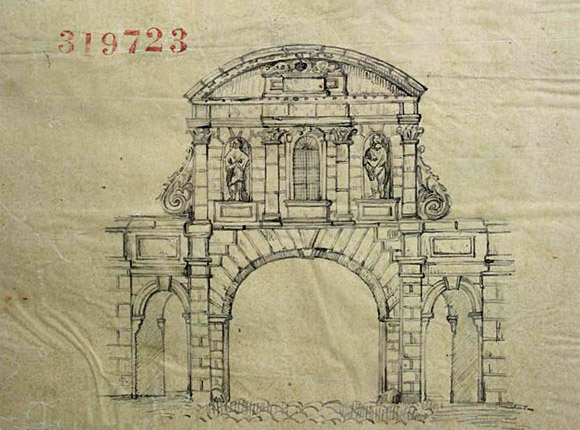
Design Representation
Design Details
Needle Case Type: |
Figural |
Patent/Registered to: |
W. Avery & Son - Redditch |
Patent/Design Representation #: |
Ornamental Class 1: Metal: #319723 |
Patent/Design Registration Date: |
March 27, 1878 |
Location of Patent/Design Registration: |
The National Archives (TNA) - Kew, UK |
Reference #:
|
TNA Representation - BT 43/43/319723
TNA Register – BT 44/4/319723 |
Dimensions: |
7 x 3.8 x 6.1 |
Material: |
Brass |
Name Variations:
|
a) Asser & Sherwin - London
b W. Avery & Son - Redditch
c) Cormack Bros- London
d) G. R. & Co
e) Mappin Bros - London
f) Mappin & Webb - London |
Other Variations:
|
a) With inscription “Erected 1670 Removed 1878”
b) Without inscription |
Additional Photographs
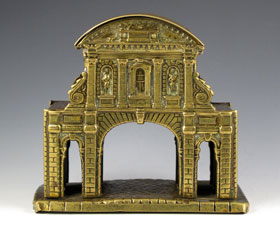
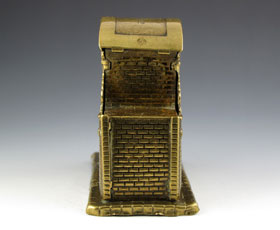
Front and side views
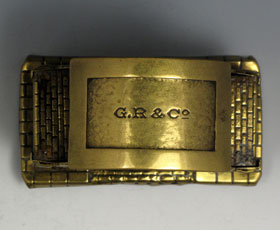
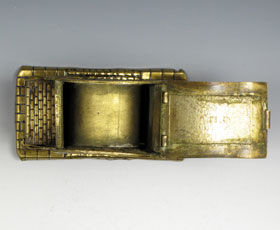
Top closed and open
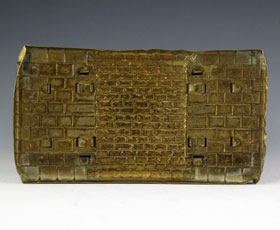
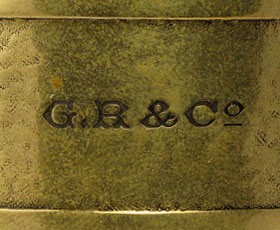
Bottom and top G.R. & Co signature detail
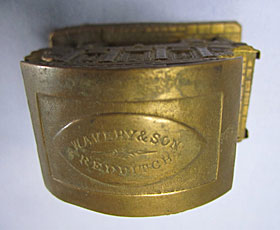
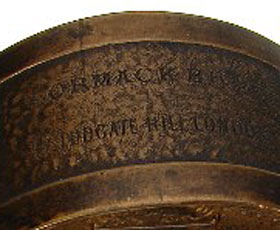
Top Avery signature detail and top Cormack signature detail
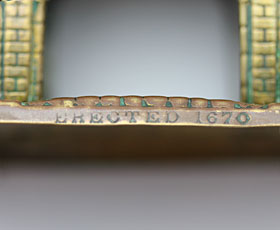
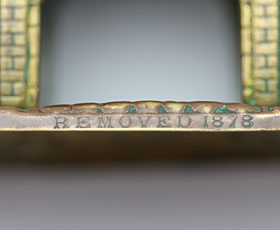
Front and back inscriptions (photos courtesy of Lynda Herrod)
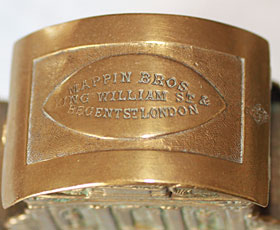
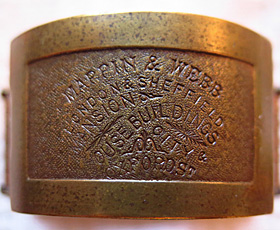
Top Mappin Bros signature detail (photo courtesy of Sandi Falconer) and top Mappin & Webb signature detail (photo courtesy of David Chatterley)
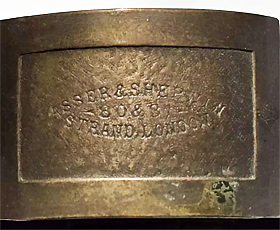
Asser & Sherwin signature detail (photo courtesy of Grant Constan)
Facts
The Temple Bar was one of eight main gateways into the city of London originally erected to control traffic entering the
city. Designed by Christopher Wren, who also designed St. Paul’s Cathedral in London, it was a two-storied structure with a
central arch under which road traffic flowed with two smaller side arches that were used for pedestrians. Statues of the Stuart
monarchy were placed in the niches above the central arch. Below is a drawing of the gateway from 1870.
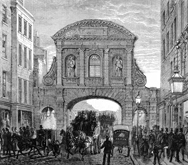
History
The Temple Bar was commissioned by King Charles II and was constructed between 1669 and 1672. When traffic increased
substantially during the Victorian Era, the building actually obstructed traffic. As a result, in 1878 it was dismantled and later
purchased by a wealthy family where it was re-erected as the gateway to their estate in Hertfordshire. In 1984 it was sold
to the Temple Bar Trust for 1 pound. This photo shows the gateway as it appeared in the late 20th century before it was sold to the
trust.
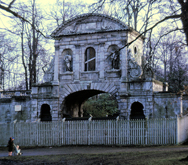
Location
The original Temple Bar was placed at the point were Fleet Street in London meets The Strand in Westminster. After spending
206 years at that location in London and another 125 years in Hertfordshire, it was re-erected at Paternoster Square in London next to St.
Paul’s Cathedral in 2004 where one finds it today.
